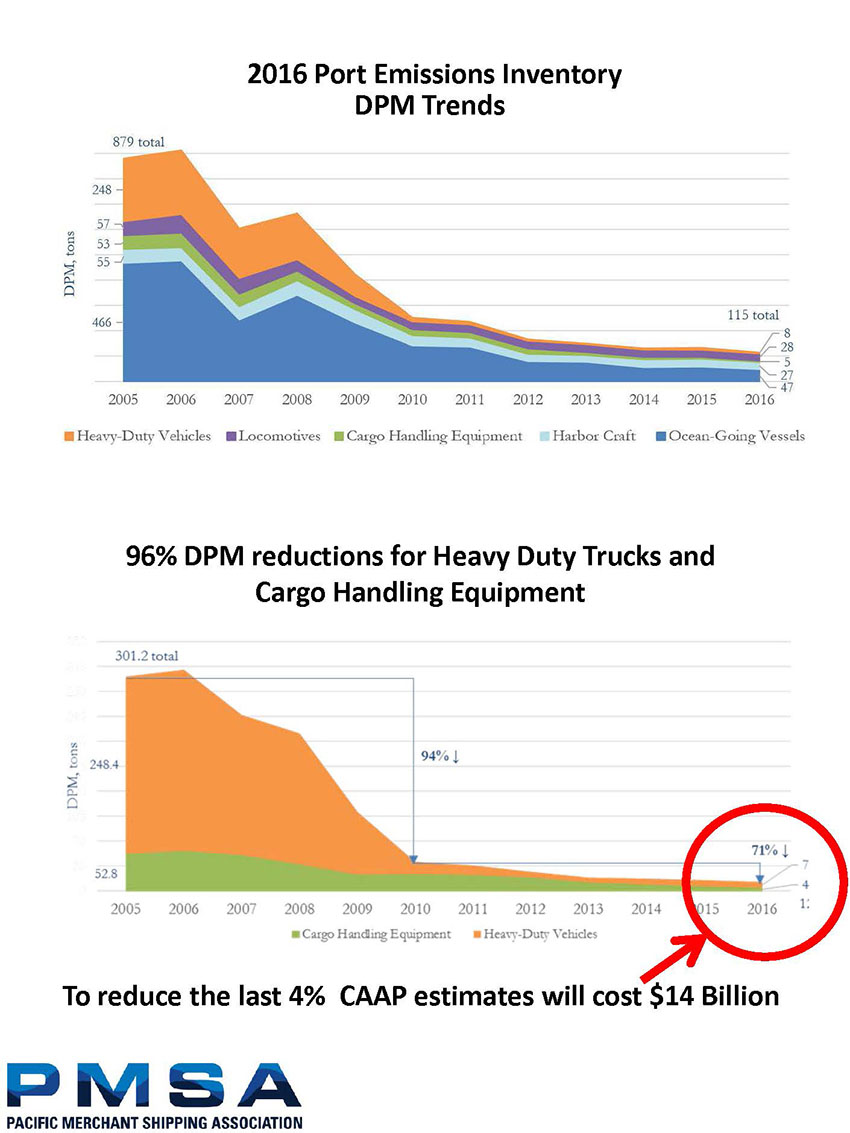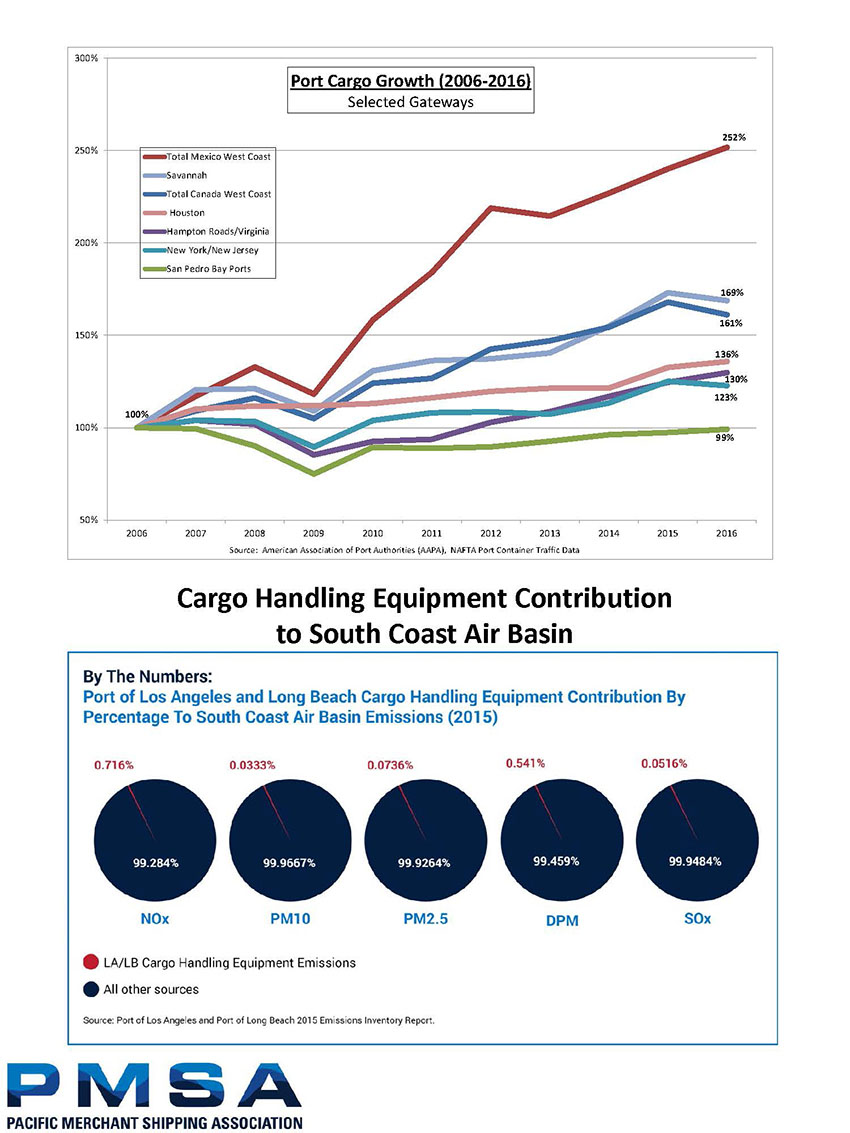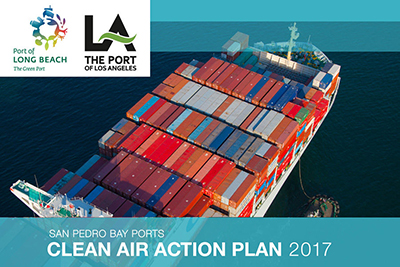Port of LA/LB Clean Air Action Plan at best “a mixed blessing?”
The question remains: “will the waterfront be reshaped for the better or the worse?”
John McLaurin, president of the Pacific Merchant Shipping Association, admits that the Clean Air Action Plan (CAAP) proposed by the ports of Los Angeles and Long Beach will indeed by “transformative,” and will reshape the Southern California waterfront.
But the question remains, “will the waterfront be reshaped for the better or the worse?”
According to McLaurin, the CAAP’s recommended program will have impact on a variety of stakeholders, including longshoremen and truckers working on and around the waterfront. He adds that warehouse workers in the Inland Empire and agricultural exporters in the Central Valley will also be affected, along with everyone who touches or relies on freight in Southern California.
As noted in LM, the CAAP mandates the use of zero-emission, electric equipment at marine terminals by 2030 and zero emission trucks by 2035.
Skeptics include Sal Ferrigno, vice president of SSA Terminals, who has stated that said placing too much reliance on electrification would be a mistake.
“Given its far-reaching scope and significant impact to California’s economy, the CAAP requires thoughtful analysis and honest discussion about its impact. Failure to adequately do so puts the ports and those depending on the ports at risk,” says McLaurin.
The PMSA observes that these two mega-ports and their tenants operate in a hyper-competitive global trade environment, and notes that they are “not the only game in town.”
Numerous alternative gateways throughout North America for cargo interests to use exist. Whether it’s Prince Rupert in Canada, Lazaro Cardenas in Mexico or Gulf and East Coast ports like Houston, Mobile, Jacksonville, Savannah, New York/New Jersey and others — the opportunities for cargo diversion are more plentiful than ever before.
“All of the above trade gateways have enjoyed higher rates of growth during the past 10 years than the ports of Los Angeles and Long Beach,” says McLaurin. “These non-Southern California gateways are aggressive and they all want this cargo. In addition, Los Angeles and Long Beach have lost market share to the competition.”
As the current CAAP highlights, emissions from Southern California port operations have declined dramatically since the first CAAP was implemented in 2006. These reductions have been achieved through the active partnership between the ports, their tenants and shippers, local communities and regulators.

Dr. Walter Kemmsies, Chief Strategist for the commercial real estate firm Jones Lang Lasalle, says no other industrial sector has reduced emissions in such significant amounts so quickly. This is an observation that PMSA shares, adding a caveat.
“These emissions reductions are truly a cause for celebration — but not complacency,” cautions McLaurin. “Unfortunately, as we enter the CAAP’s next phase, where the remaining emission reductions are small because there’s not much left to reduce, the ports are attempting to dictate how the remaining emissions reductions are to be achieved irrespective of cost.”

The ports may be coming out with a revised CAAP as soon as next week, and that version will be the one that the port commissions will vote on November 2nd.













